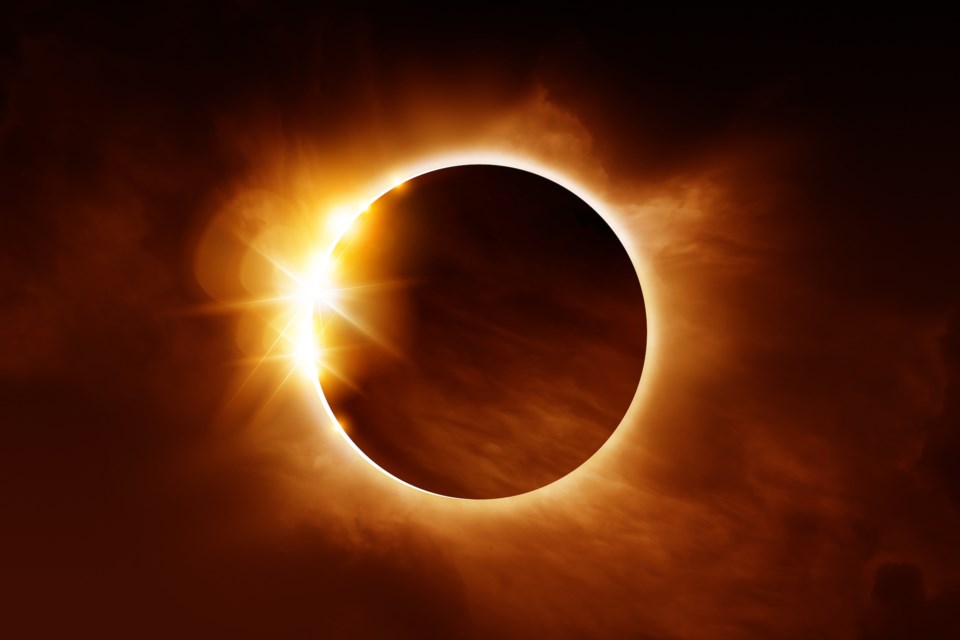A local astronomer says the best place to view the impact of Monday's total solar eclipse is in familiar surroundings, like your backyard or neighbourhood park.
“There will be a noticeable darkening of your surroundings, (even though) it will not darken completely,” said Phil Morrow, an amateur astronomer at the Richmond Hill David Dunlop Observatory and member of the Royal Astronomical Society of Canada.
However, he added, “If you are able, and have the opportunity to travel to a site that will experience totality, it will be worth it.”
“A total solar eclipse is a once-in-a-lifetime event. We’re not going to see another total eclipse in the GTA for another 120 years.”
On April 8, the moon will be in a direct line between the sun and the Earth, creating a dark, quickly moving shadow on the face of our planet. Sun rays will be blocked, plunging the surrounding landscape into darkness.
Those on the southern edge of Lake Erie and southeastern corner of Lake Ontario will experience totality, while viewers in other towns will see a partial eclipse, he said. The closer a viewer is to the centre line of the path, the longer the eclipse lasts.
"Although Newmarket and Toronto are not on the path of totality, I’m looking forward to sharing the experience with our registered participants at the Richmond Hill David Dunlap Observatory."
The "deep partial eclipse" in Newmarket will last for two hours and 26 minutes, beginning at 2:05 p.m, peaking at 3:20 at 98.5 per cent magnitude, and ending at 4:31 p.m.
Interest in the eclipse is high, with viewing glasses selling out and programs quickly filling at the observatory, which remains Canada's largest optical telescope with a primary mirror measuring more than 1.88 metres (74 inches) in diameter.
You may be able to have a better view of the eclipse if you find a high level of elevation, Morrow suggested.
“If you can find a high hill with a southwestern view, and the weather co-operates, you may be able to see the advancing shadow as it rolls toward us,” said Morrow. “Everything is weather dependent.”
Cloudy or stormy skies could obliterate views of the eclipse. Unfortunately, Environment Canada is currently forecasting mostly cloudy skies for Newmarket on Monday.
The Canadian Space Agency states looking at the sun directly without appropriate protection can lead to serious problems, such as partial or complete loss of eyesight.
Staring at the sun without protection may cause damage to your retina. This damage can occur without any sensation of pain. The injury can be temporary or permanent.
You can find more tips for viewing and photographing the eclipse here.
“Eclipses generate a lot of interest and we urge Canadians to enjoy the spectacle while keeping their eyes safe,” said Martin Spiro, president and CAO of the Canadian Association of Optometrists.
“Children, being naturally curious, may need extra supervision during eclipses. They might not fully comprehend the risks involved, so be sure to plan and have approved solar eclipse viewers or alternative safe viewing methods on hand.”
The association recommends protecting your eyes at all times using approved solar eclipse viewers that meet international standard ISO 12312-2 for safe viewing.
Few glasses are available locally, it seems, however, Eyes on Stonehaven has a small supply still available.
A total solar eclipse will glide across northern Greenland, Iceland, and Spain in 2026. The next total solar eclipse in North America will arrive on March 30, 2033, but only in Alaska. It will then sweep across Western Canada in 2044.
— With files from Canadian Press





